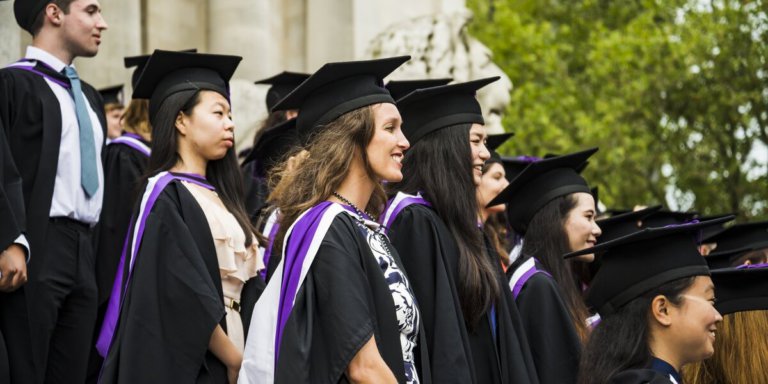
According to The Guardian, the number of international students from non-EU countries applying and consequently securing places at UK universities has significantly increased.
This is based on the latest figures from UCAS, compiled four weeks after A-levels day which takes last-minute places from clearing into account.
“UCAS says a record 40,720 international students from outside the EU have been accepted on courses this year, a 6% increase on last year. This is due largely to a 30% rise in the number of Chinese students choosing to study in the UK.”
Students from China have been looking towards studying abroad in other countries ever since the US-China trade war caused delays in visas and increased scrutiny for global applicants.
But even without the tensions between the US and UK, the “number of students from mainland China studying in UK higher education has more than doubled in the past decade.”
Clare Marchant, UCAS Chief Executive, said, “It’s fantastic to see so many students from diverse backgrounds getting the life-changing opportunity to study at our internationally renowned universities and colleges.
“More people using clearing shows the increasing flexibility of the different routes students can choose to enter higher education.”
So exciting to see how many international students will be studying in the UK at our fabulous universities! ✍️ Excellent advice available @ucas_online and https://t.co/bsxruiODlM for any students wanting advice on #UCASapplications 🤓 https://t.co/HQGBdjGdqk
— Jane Marshall (@JaneMarshallpsi) September 12, 2019
There are concerns in the UK over how the upcoming Brexit will affect the number of international students applying to UK universities, particularly from Europe as they will soon have to pay higher fees.
According to The Guardian, “the figures reveal that the number of EU students, which has previously been a strong growth area for UK universities, has flattened out in the continuing Brexit uncertainty, with 30,350 confirming places through UCAS this year, similar to last year’s figures.”
However, the high number of international students show that the UK is still a top study abroad destination among non-Europeans – but there are also new players to look out for.
According to statistics by the Institute of International Education, new foreign student enrollment in the United States dropped by 6.6 percent in 2017-18 – twice the drop from the previous year.
“While the total number of international students in the US grew slightly in those years, the drop in new enrollees is said to be the biggest since the terrorist attacks of 9/11 in 2001.
“In the last 20 years, according to The Economist magazine, the number of international students has more than doubled and will double again by 2025, from 2 million in 2000 to 7 to 8 million in the next five years. As America has lost foreign students, countries such as Australia, China and Canada have gained them.
“And there are new players in the marketplace. Japan has a goal of 300,000 students by 2020, which is 60 percent more than just four years ago. And Malaysia is hoping to have 250,000 foreign students attending their universities by 2025.”
The UK’s recent announcement that it will be bringing back two-year post-study work visas for international students should also tip the balance in their favour. They will be granted the visa with or without a job after graduation.
International students will be offered a two-year UK visa after graduation with or without a job, reversing one of the major aspects of former Prime Minister Theresa May “hostile environment” strategy https://t.co/7LQu1C4YF9
— CNN International (@cnni) September 11, 2019
This makes it much easier for them to secure employment, compared to the four month period that has been in effect for the past seven years.
The UK’s position as a major study abroad destination and pathway for international students to work and settle down in the country seems stronger than ever.







